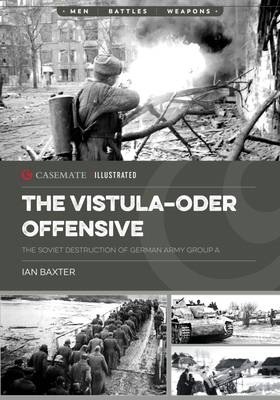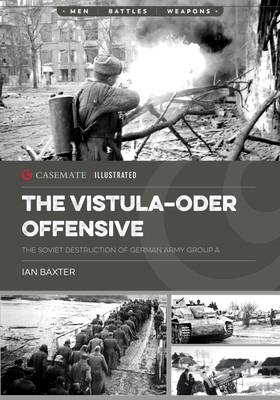
- Afhalen na 1 uur in een winkel met voorraad
- Gratis thuislevering in België vanaf € 30
- Ruim aanbod met 7 miljoen producten
- Afhalen na 1 uur in een winkel met voorraad
- Gratis thuislevering in België vanaf € 30
- Ruim aanbod met 7 miljoen producten
Zoeken
€ 40,45
+ 80 punten
Omschrijving
"The book is replete with maps, photographs, profiles of commanders and weapons, and illustrations that help explain the brutal combat in a region that another historian has called the 'bloodlands' of Europe." -- New York Journal of Books
The Vistula-Oder offensive was a massive Soviet Army operation on the Eastern Front which was launched on 12 January 1945 and paved the way for the Battle of Berlin. Its main objective was a major advance from the River Vistula to the River Oder, bringing Soviet forces within fifty miles of the gates of Berlin. The offensive faced a German defensive line east of Warsaw. These 450,000 German troops were outmatched three to one by the Soviet forces. The Red Army assault began what would be a devastating three weeks for the German forces of Army Group A.
German attempts to hold their lines and avoid being sucked into a maelstrom of destruction were unsuccessful. Army Group A would collapse almost all the way back to Berlin, ending the Third Reich's desperate efforts to cling onto land captured in Poland five years earlier, and stem enemy forces spilling over into Germany and threatening Berlin. The battle saw some 295,000 soldiers killed and 147,000 captured, as well as thousands of tanks, artillery, and machine guns destroyed. Within two months of the offensive the battle of Berlin was launched.
This fully illustrated book relates this story of defeat and survival, offering a detailed visual record of Nazi Germany's demise between two main rivers in Poland and Germany.
The Vistula-Oder offensive was a massive Soviet Army operation on the Eastern Front which was launched on 12 January 1945 and paved the way for the Battle of Berlin. Its main objective was a major advance from the River Vistula to the River Oder, bringing Soviet forces within fifty miles of the gates of Berlin. The offensive faced a German defensive line east of Warsaw. These 450,000 German troops were outmatched three to one by the Soviet forces. The Red Army assault began what would be a devastating three weeks for the German forces of Army Group A.
German attempts to hold their lines and avoid being sucked into a maelstrom of destruction were unsuccessful. Army Group A would collapse almost all the way back to Berlin, ending the Third Reich's desperate efforts to cling onto land captured in Poland five years earlier, and stem enemy forces spilling over into Germany and threatening Berlin. The battle saw some 295,000 soldiers killed and 147,000 captured, as well as thousands of tanks, artillery, and machine guns destroyed. Within two months of the offensive the battle of Berlin was launched.
This fully illustrated book relates this story of defeat and survival, offering a detailed visual record of Nazi Germany's demise between two main rivers in Poland and Germany.
Specificaties
Betrokkenen
- Auteur(s):
- Uitgeverij:
Inhoud
- Aantal bladzijden:
- 128
- Taal:
- Engels
- Reeks:
Eigenschappen
- Productcode (EAN):
- 9781636243597
- Verschijningsdatum:
- 4/01/2024
- Uitvoering:
- Paperback
- Formaat:
- Trade paperback (VS)
- Afmetingen:
- 176 mm x 252 mm
- Gewicht:
- 417 g

Alleen bij Standaard Boekhandel
+ 80 punten op je klantenkaart van Standaard Boekhandel
Beoordelingen
We publiceren alleen reviews die voldoen aan de voorwaarden voor reviews. Bekijk onze voorwaarden voor reviews.











